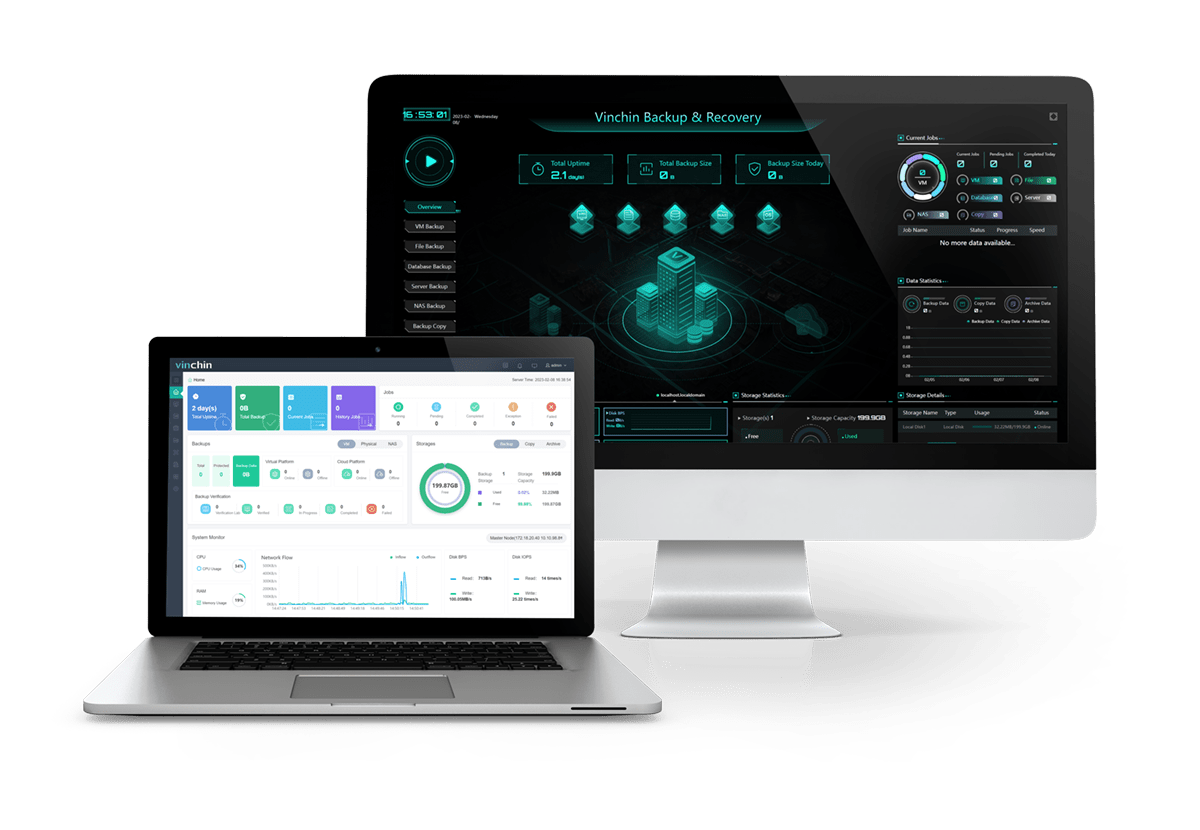-
What is NTFS?
-
What is ReFS?
-
Comparing with NTFS and ReFS
-
VM protection with vinchin Backup & Recovery
-
Conclusion
What is NTFS?
In 1998, Microsoft introduced the FAT32 file system, which includes a 32-bit file allocation table. With the significant growth in disk capacity since 2000, the FAT32 file management format significantly enhances disk management capabilities. The NTFS file system, on the other hand, breaks through FAT16's file size limit of only 2GB per partition. It enables users to manage large-capacity disks more efficiently and store larger files.
After the Win 98 operating system, Microsoft introduced the New File (NTFS) file system for NT systems. The NTFS format began to support metadata and was more efficient than FAT32 disks. Operating systems using the FAT32 format can support partitions up to 32GB, while systems supporting the NTFS format can support disk partitions up to 2TB.
What is ReFS?
Starting with Win 10, Microsoft introduced the ReFS file system, also known as the Resilient File System. Compared to the NTFS file system, the ReFS file format improves reliability, especially for aging disks or if a machine suffers a cinematic power failure. Part of the reliability comes from underlying changes, such as the storage and updating of file metadata. ReFS is compatible with cross-sector volume technology. When a disk fails to read or write, ReFS performs a system check to detect these errors and copy the file correctly.
Comparing with NTFS and ReFS
ReFS vs NTFS: Pros
1. The fact that the file system NTFS no longer requires the command to repair the disk may not be important to many people. However, in reality, during long term use of a computer, there are times when repairs are needed. (especially in cases such as sudden power outages), but the ReFS format innately does not require repair.
2. Because no repair command is needed, the ReFS format minimizes the impact of bad sectors on the hard disk. In case of NTFS format, there will be bad sectors in the data area and the data may be corrupted. However, the ReFS format has the function of automatically verifying data and repairing data. It is recommended for users who require high stability in data storage.
NTFS vs ReFS: Cons
1. ReFS installation as a system is not supported and cannot be used as a boot partition.
2. Now Win10 Pro doesn't offer a format option for the ReFS format by default, only Enterprise and Professional Workstation editions do (but Pro still offers format support).
It's worth noting that ReFS is a modern file system designed for PCs dealing with large volumes of data, and it exhibits resilience against data corruption. ReFS is not a direct replacement for NTFS (ReFS volumes cannot be used as a boot source), but essentially, it is a more efficient file system for advanced users. The ReFS file system can be thought of as somewhat akin to NTFS combined with RAID5.
VM protection with vinchin Backup & Recovery
In summary, comparing with NTFS and ReFS, ReFS can provide a higher level of data protection and integrity. However, careful consideration needs to be given to your backup and protection strategy in order to ensure that it is applicable to your virtualized environment and needs. The effectiveness and recoverability of VM backups is critical to business continuity.

Vinchin Backup & Recovery is a backup solution designed for virtual machines of VMware, Hyper-V, XenServer, XCP-ng, oVirt, RHV, etc. It provides comprehensive and powerful VM backup and recovery features like agentless backup, instant recovery, V2V migration designed to protect and manage critical data in the virtualization environment.
Vinchin Backup & Recovery’s operation is very simple, just a few simple steps.
1.Just select VMs on the host
2.Then select backup destination
3.Select strategies
4.Finally submit the job
Vinchin offers a free 60-day trial for users to experience the functionality in a real-world environment. For more information, please contact Vinchin directly or contact our local partners.
Conclusion
In summary, while ReFS offers greater reliability than NTFS, especially for large amounts of data. However, backup and recovery strategies should be carefully considered to ensure business continuity. Vinchin Backup & Recovery is a backup solution designed specifically for VMs, offering comprehensive features for data protection in virtualized environments.
Share on:








